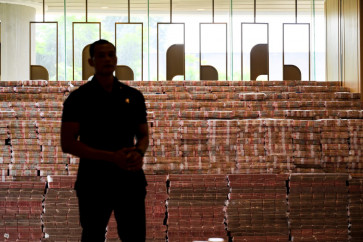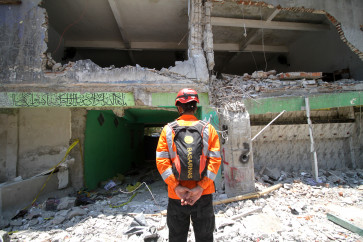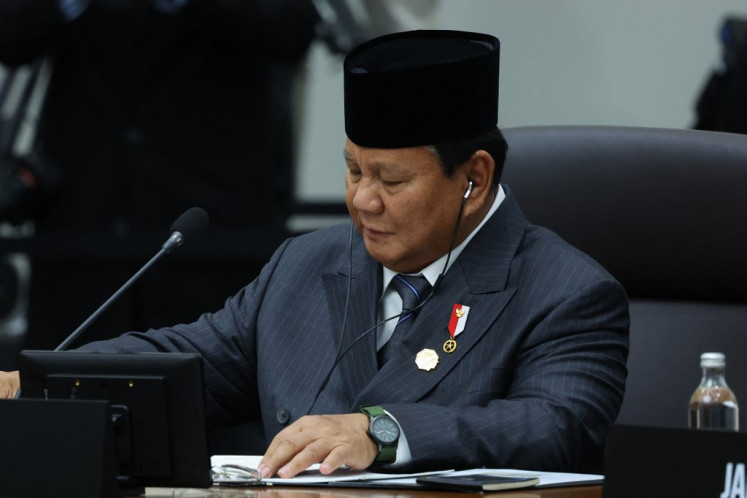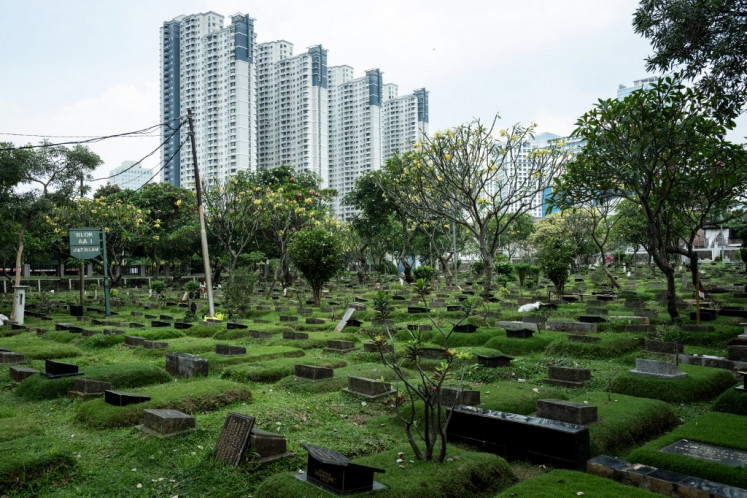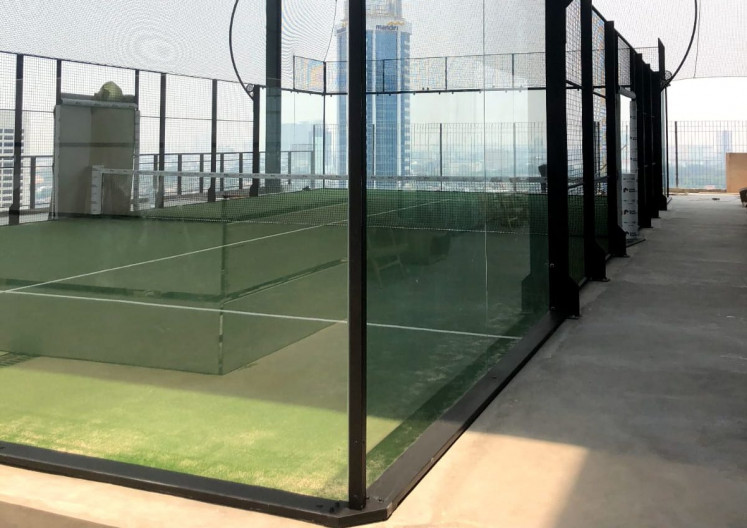Popular Reads
Top Results
Can't find what you're looking for?
View all search resultsPopular Reads
Top Results
Can't find what you're looking for?
View all search resultsTattoo revival
Tattoos and body piercings have become quite the trend among Balinese youths and expatriates over the last few years
Change text size
Gift Premium Articles
to Anyone
Tattoos and body piercings have become quite the trend among Balinese youths and expatriates over the last few years.
They were once associated with the darker, wilder side of life, and mainly worn by street thugs or social outcasts on this island of the Gods. Nowadays, boys and girls wear tattoos as an esthetic expression, a fashion symbol, or a sign of the daring and often reckless spirit of young peoples’ lives.
“Back then, we tattooed our body to show we were not afraid of pain, and also to show people how different we were from the rest of the population,” a former member of Armada Racun once said.
Armada Racun was Denpasar’s street gang that gained notoriety in the 1970s. Most of its leaders had three things in common: They mastered pencak silat (traditional martial art), they were experts at provoking street brawls, and wore scary-looking tattoos on their torso.
Nowadays, however, young people don’t wear tattoos to scare other people away or show their allegiance to certain gangs, but to look more beautiful or immortalize an important memory.
Young Denpasar restaurateur and all-around timid guy Gung Gus has only one tattoo on his body. The tattoo was inspired by the works of his late grandfather Han Snel, the Dutch-born painter who moved to Ubud, married a Balinese woman and led a happy life on the island.
“I respect and adore my grandfather so much that I want to carry part of his life with me throughout my life. Having a part of his work tattooed on my body was the perfect way to do that,” he said.
This shift in motivation has fueled the birth of high-end tattoo studios in the island.
One recent addition is Kuta’s Two Guns, a tattoo parlor founded and managed by Australian Peter Amiet.
An art form: Eka Waves (above), a tattoo artist at Two Guns, draws a tattoo on a client, using a special tool (photo right). The two storey studio boasts air-conditioned workshops and Western health standards, obviously targeting tourists and expatriates.
“Local tourists come and they said it’s too expensive,” Peter said, referring to the price tags for the studio’s services.
A tattoo lover himself, Peter explained part of the price difference with local tattoo studios could be explained by the different health safety standards applied.
“Health safety standards are number one [for us]. You can see, our studio looks like a hospital,” he pointed out.
Later on, he produced a certificate issued by the Indonesian Subculture, a tattoo art and body piercing association which proves Two Guns follows proper and safe tattoo procedures.
I Gede “Shotonk” Supala, a native of Buleleng who owns and runs Legian’s Shotonk Tattoo, shares Peter’s concern with health and safety standards. Supala went a long way to implement standard sterilization procedures on the studio’s tools and work methods.
“This is a machine not many studios have,” said Shotonk’s tattoo artist Kadek Lucky, pointing at a medical-grade autoclave steam sterilizer, which sterilizes the tattoo’s tools by subjecting them to high-pressure steam at a very high temperature.
“HIV and Hepatitis infections are two of several health hazards that haunt both the tattoo artists and customers,” Supala said, acknowledging there are still many studios that still don’t apply standard health and safety procedures.
“There is a real need for standardization of health and safety procedures. We can only achieve it by establishing a governing body and organizing regular training as well as workshops,” he said, adding that Denpasar alone has more than 45 tattoo studios.
The growth in the number of people wanting tattoos, comprising mostly young people and expatriates from high-income families, has also spurred an esthetic competition among studios as they try to outdo each other by providing the most beautiful and original designs.
“I always point one fact out to each of my customers: The tattoo will stay there forever. That’s why the design is very important. It must be original, it must be different, it must be telling a story, and, most importantly, the customer must be comfortable wearing that design for the rest of their life,” Supala said.
Fashion statement?: A young women shows her tattoo. Tattoos are no longer the preserve of streetgangs, with women increasingly wearing them as a fashion symbol, or to preserve a memory. Two Guns’ tattoo artist Eka Waves disclosed that several years ago many tattoo artists chose to simply duplicate the designs of foreign artists published in tattoo magazines rather than create their own.
“Nowadays, we create our own designs from scratch. That’s why tattoo artists have to have excellent drawing and conceptualizing skills. Customers also want original tattoos,” he said.
Naturally, the Balinese artists look into their own culture for inspiration. This move has resulted in a growing number of Bali-inspired designs entering the tattoo mainstream.
“Frangipani flowers, Hindu’s sacred alphabets, the mythical bear-like Barong and Goddess of Death Durgha’s wrathful manifestation Rangda, are some of the most popular Bali-inspired tattoo designs,” Eka disclosed.
Tattoo artists feel more confident and self-assured now that young people view tattoos in a more
positive light and that the tattoo industry has experienced a robust growth. Artists — who are no longer reluctant to talk about their profession — have formed the Bali Tattoo Artist Club, which so far has
30 members.
“Now I am proud to tell my relatives I work as a tattoo artist. I earn a lot of money from it,” Kadek Lucky said.
Addictive: A man shows the tattoos covering his body. Lucky charges up to Rp 800,000 for a one-hour session, which is quite a large sum in the island where the average income still ranges from Rp 1.5 to Rp 2.5 million per month.
“I will never forget the fact that five years ago I was still getting paid with a carton of cigarettes,” he added with a wide grin.
Tattoo artists also take pride in their work because it gives them the opportunity to be part of something very emotional and personal.
Lucky recalled his encounter with 10 Australian men following the 2002 Bali Bombings, which claimed 202 lives, including 88 Australians. The Australians asked Lucky to tattoo the words “My Brothers’ Keepers” around the base of their necks.
“[It was] A similar design for 10 different men and that’s when I realized they were all the relatives
of victims. They wanted to wear these ‘necklaces’ of remembrance to honor the memories of their loved ones. I was deeply touched and honored to create those ‘necklaces’ for them,” he said.
— Photos by JP/Agung Parameswara





